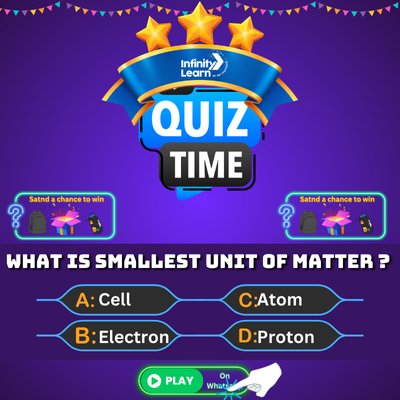Table of Contents
Looking to strengthen your preparation for CBSE Class 6 English exams? Access our carefully curated MCQ questions from Chapter 2 – “The Kite” along with answers, available for free PDF download. These multiple-choice questions are designed as per the latest CBSE, NCERT, and KVS guidelines, ensuring complete syllabus coverage and alignment with the most recent exam pattern.
Practicing these Class 6 English MCQs will not only improve your grasp of the chapter but also boost your confidence for school assessments. Regular practice can enhance your comprehension skills and help secure higher marks.
Explore more chapter-wise MCQs for Class 6 English and browse through the newest study materials for all major subjects to support your academic success.
MCQ Questions for Class 6 English Honeysuckle Poem 2 The Kite with Answers
Class 6 English students should refer to the following multiple-choice questions with answers for Chapter 2 The Kite in Class 6.
Comprehension and Theme
- What is the main theme of the poem “The Kite”?
a) Rainy days
b) A bird’s journey
c) Flying a kite
d) Building a kite
Answer: c) Flying a kite - Who is the speaker in the poem?
a) The kite
b) The wind
c) A child flying a kite
d) A bird watcher
Answer: c) A child flying a kite - What happens to the kite when the wind blows?
a) It falls
b) It sleeps
c) It soars high
d) It breaks
Answer: c) It soars high - What natural elements affect the kite’s flight?
a) Sun and rain
b) Snow and thunder
c) Wind and weather
d) Stars and moon
Answer: c) Wind and weather - What is the poet’s tone in the poem?
a) Sad and gloomy
b) Joyful and energetic
c) Angry and loud
d) Quiet and boring
Answer: b) Joyful and energetic
Vocabulary and Word Meaning
- What does “soars” mean?
a) Sleeps
b) Falls
c) Flies high
d) Stands still
Answer: c) Flies high - What does the word “dips” mean in the poem?
a) Sinks slightly
b) Stands straight
c) Spins fast
d) Tears apart
Answer: a) Sinks slightly - In the poem, the kite is compared to which object when it dives and dips?
a) A falling star
b) A bird
c) A wave
d) A fish
Answer: d) A fish - What does “bride of a thread” refer to in the poem?
a) A kite tied with a thread
b) A fish on a hook
c) A tightrope walker
d) A bird in a nest
Answer: a) A kite tied with a thread - What does the poet mean by “snap” in the line “snaps its tail”?
a) Cuts its tail
b) Loses its way
c) Bends its tail
d) Breaks suddenly
Answer: d) Breaks suddenly
Poetic Devices
- Which poetic device is used in “like a ship with only a sail”?
a) Simile
b) Metaphor
c) Alliteration
d) Hyperbole
Answer: a) Simile - What is the rhyme scheme of the poem?
a) abab
b) aabb
c) abba
d) free verse
Answer: a) abab - Which poetic device is used in “dives and dips and snaps”?
a) Metaphor
b) Alliteration
c) Personification
d) Repetition
Answer: b) Alliteration - Which line personifies the kite?
a) “Soars to the sky”
b) “Of blue on a blue sky”
c) “How bright on the blue”
d) “It rides on the breeze”
Answer: d) “It rides on the breeze” - What figure of speech is “bright on the blue”?
a) Metaphor
b) Alliteration
c) Onomatopoeia
d) Assonance
Answer: b) Alliteration
Lines and Interpretation
- What is the color of the kite as described in the poem?
a) Green
b) Red
c) Blue
d) Bright
Answer: d) Bright - Why does the poet say “when new” while describing the kite?
a) It shines and flies better
b) It’s torn
c) It looks old
d) It is colorful
Answer: a) It shines and flies better - What happens to the kite when the wind falls?
a) It flies faster
b) It stays still
c) It rests on the ground
d) It rises again
Answer: c) It rests on the ground - How does the poet describe the kite’s motion in the air?
a) Fast and furious
b) Gentle and still
c) Dips and dives
d) Spins and bounces
Answer: c) Dips and dives - Which activity is compared to a wave of the sea?
a) The kite flying
b) The kite’s dive
c) The kite on a string
d) The child running
Answer: b) The kite’s dive
Analytical Thinking
- Why do you think the kite’s flight is compared to a ship?
a) Because it sails
b) Because it floats
c) Because it is huge
d) Because it has a motor
Answer: a) Because it sails - What does the poem make us feel about flying kites?
a) It’s a boring activity
b) It needs a lot of money
c) It is a joyful, fun activity
d) It is dangerous
Answer: c) It is a joyful, fun activity - Which word is NOT used to describe the kite’s movement?
a) Soars
b) Sings
c) Rides
d) Dips
Answer: b) Sings - What does the poet mean by “the breeze”?
a) Rain
b) Fast wind
c) Gentle wind
d) Storm
Answer: c) Gentle wind - What makes the kite look “bright on the blue”?
a) Its colorful paper
b) The sky
c) The thread
d) The sun
Answer: a) Its colorful paper
Application & Critical Thinking
- What would happen if there were no wind?
a) The kite would fly high
b) The kite would stay on the ground
c) The kite would spin
d) The kite would break
Answer: b) The kite would stay on the ground - Why does the poet describe the kite in detail?
a) To show it’s expensive
b) To create a picture in our minds
c) To teach us how to make one
d) To tell a story
Answer: b) To create a picture in our minds - What does the kite symbolize in the poem?
a) A child
b) Freedom and joy
c) A toy
d) A bird
Answer: b) Freedom and joy - How is the movement of the kite affected by the breeze?
a) It stops
b) It moves sharply
c) It stays still
d) It shines
Answer: b) It moves sharply - What lesson can be learned from the poem?
a) We should not play outside
b) Nature and play bring joy
c) Only rich kids can enjoy
d) Flying kites is useless
Answer: b) Nature and play bring joy








